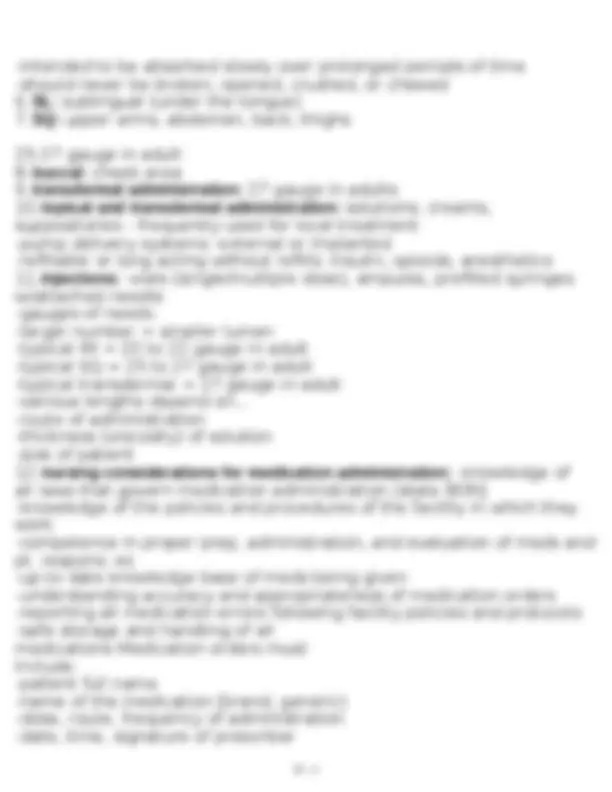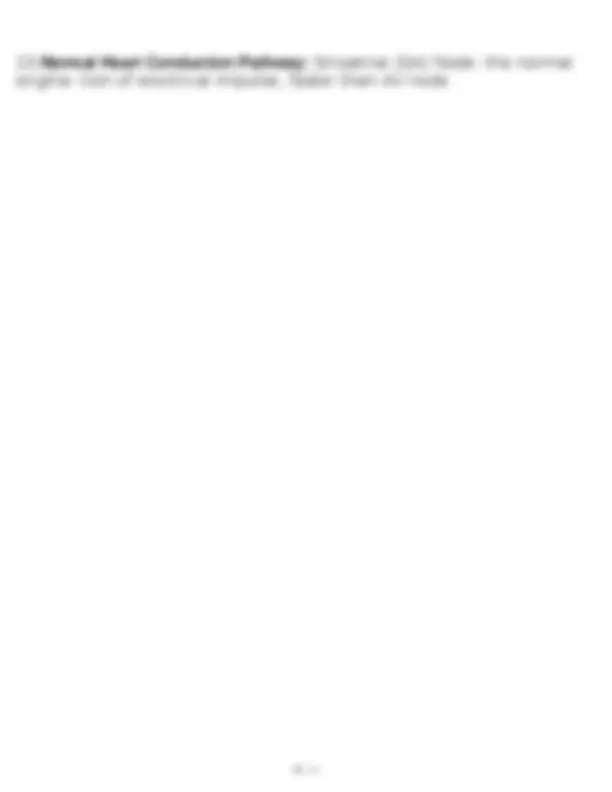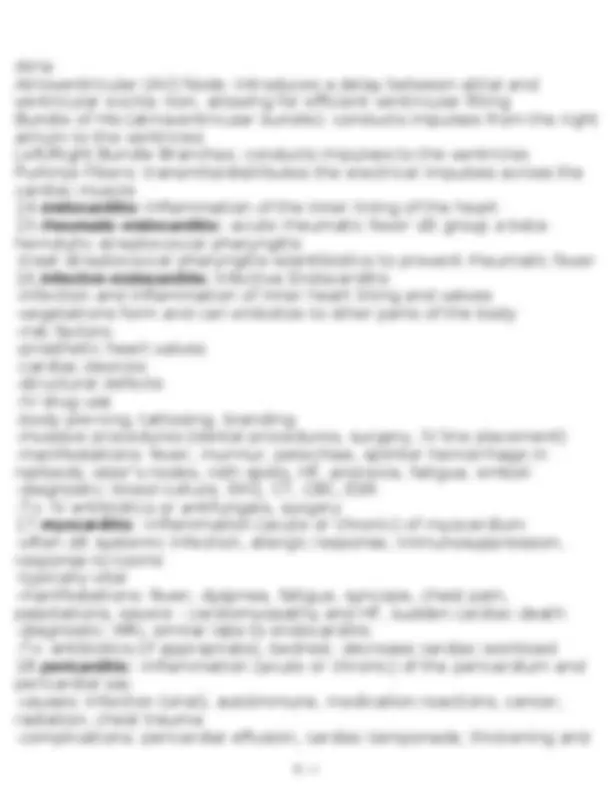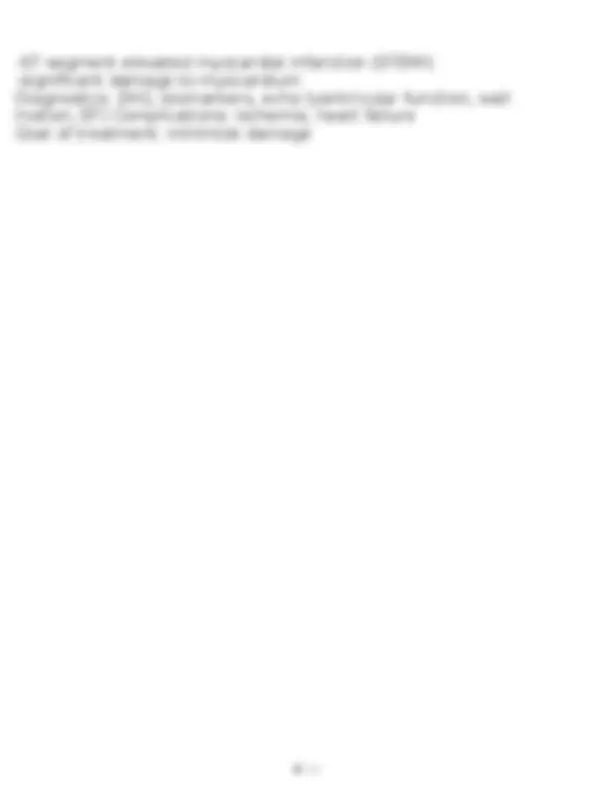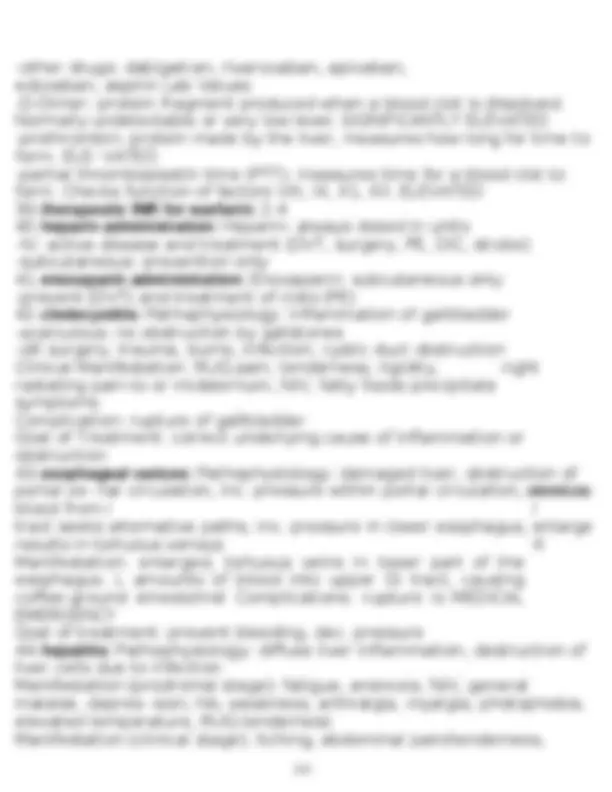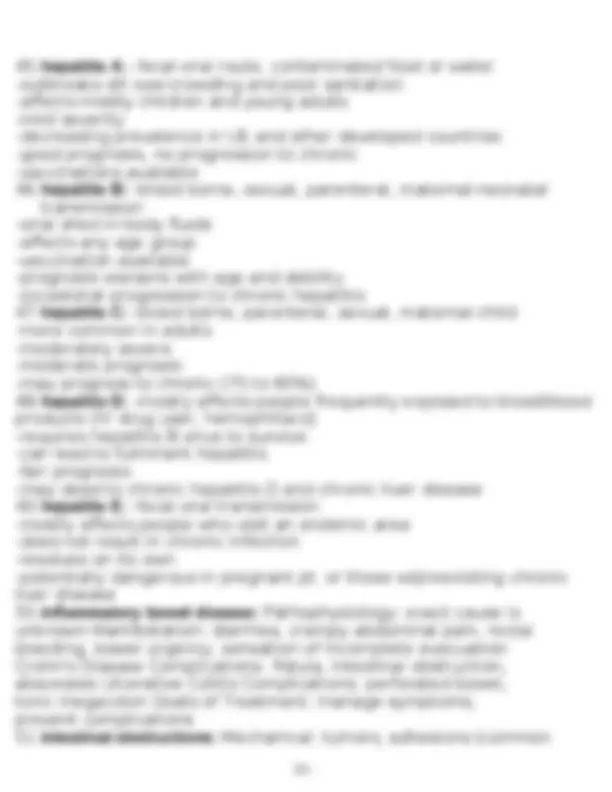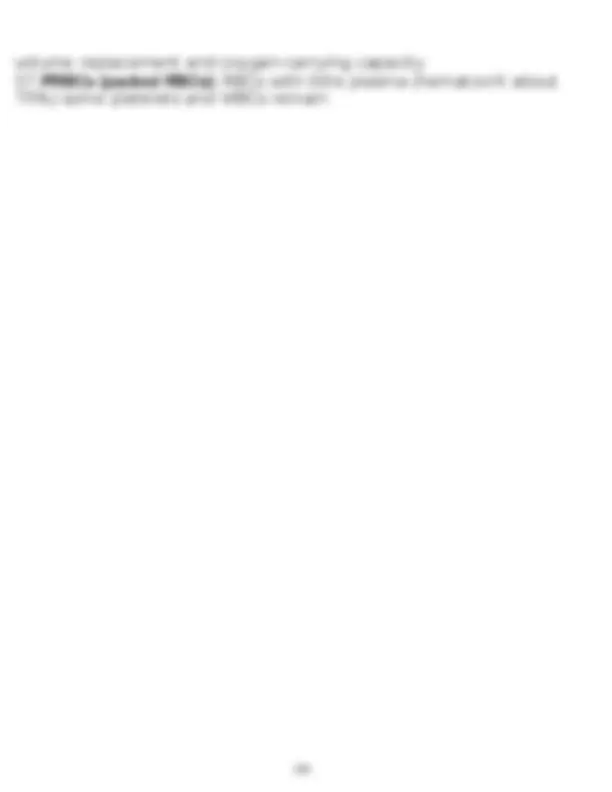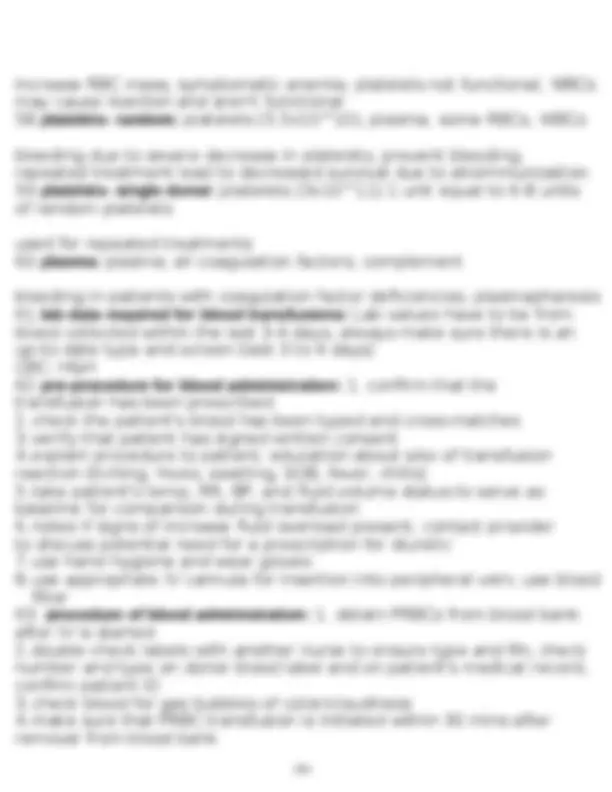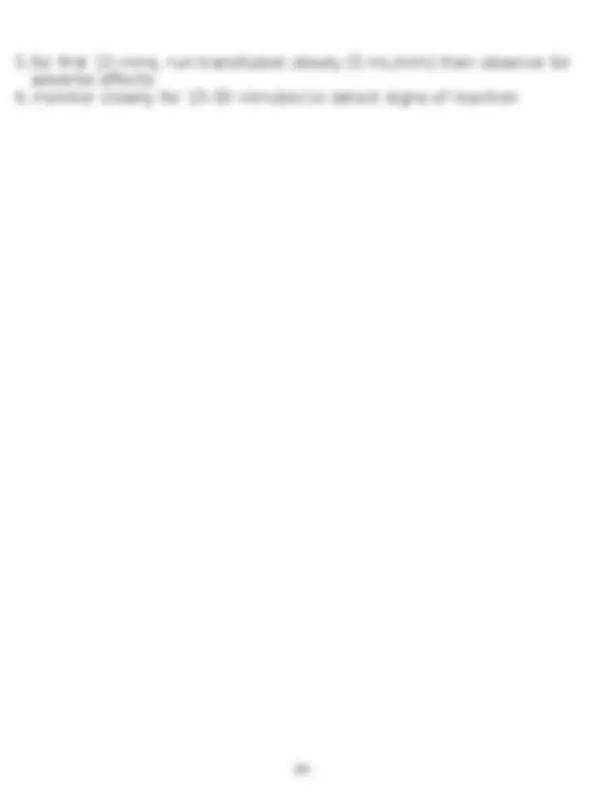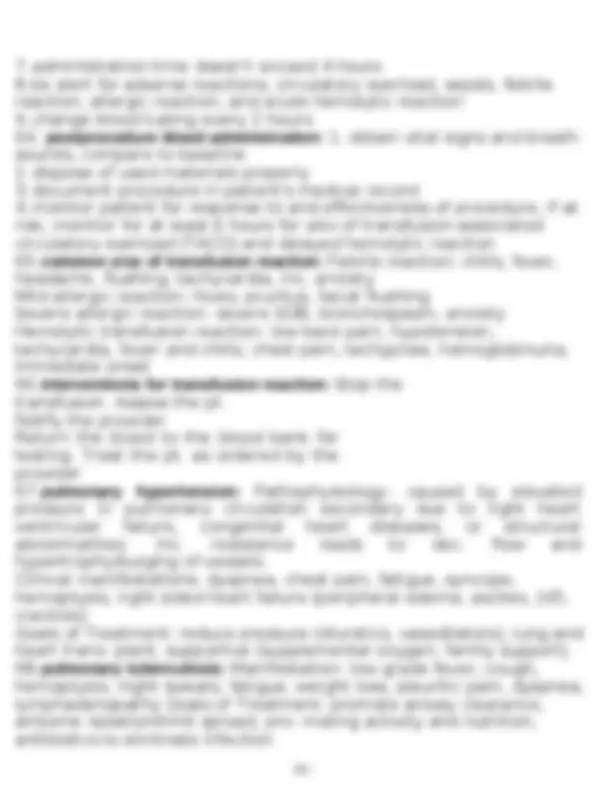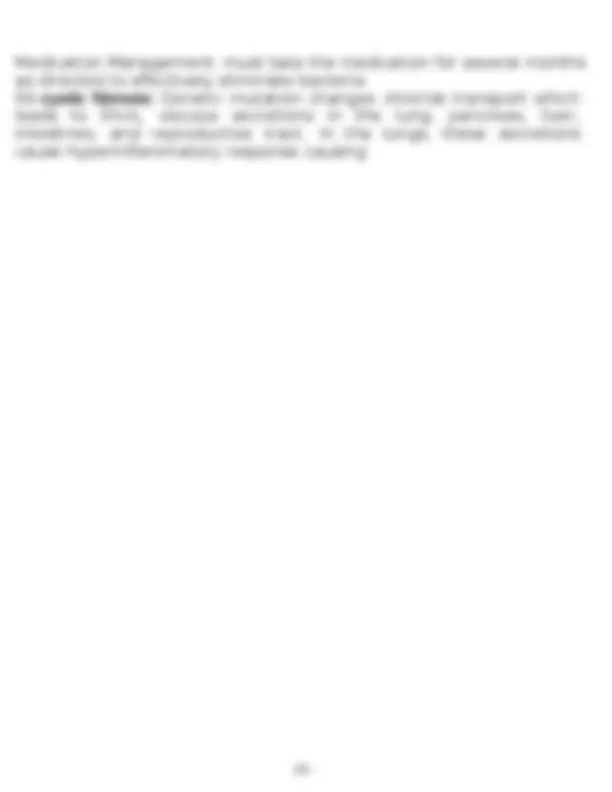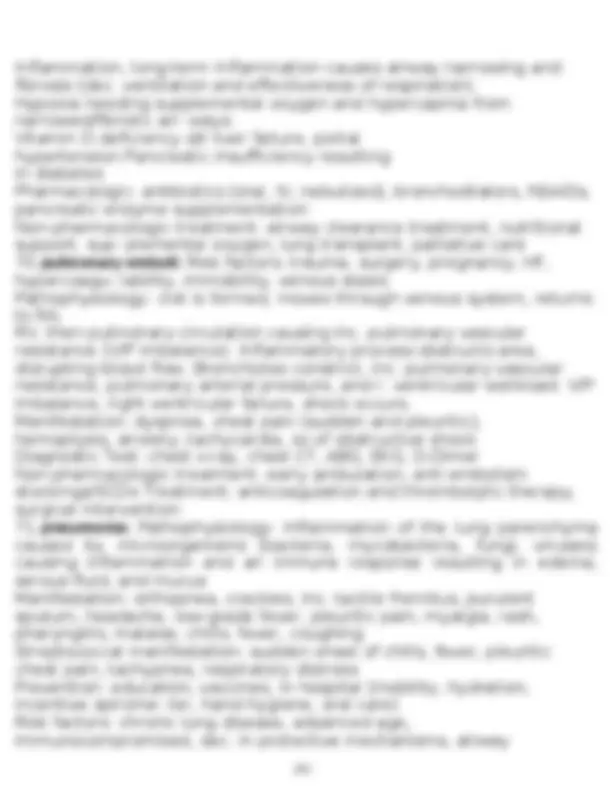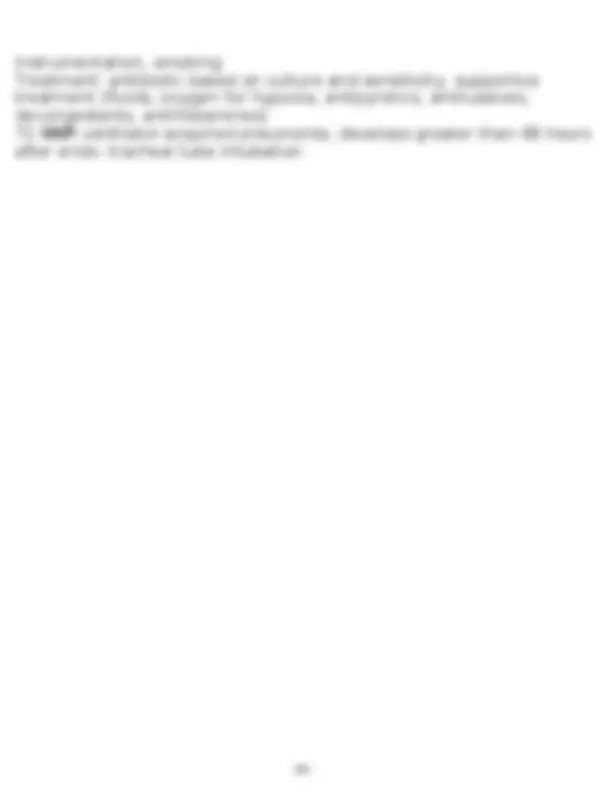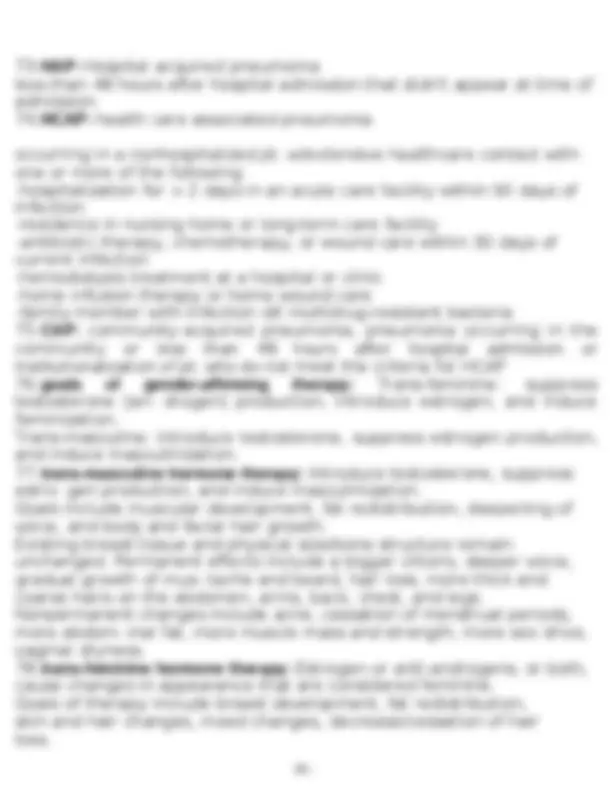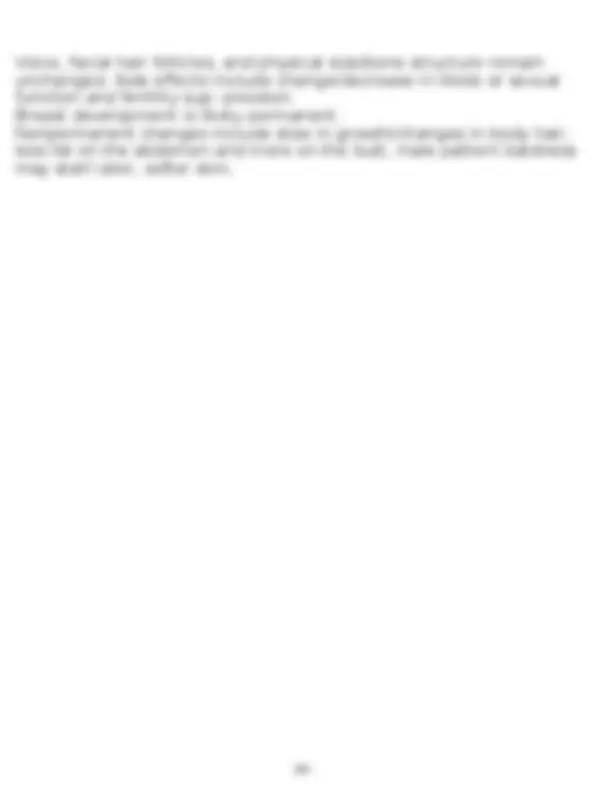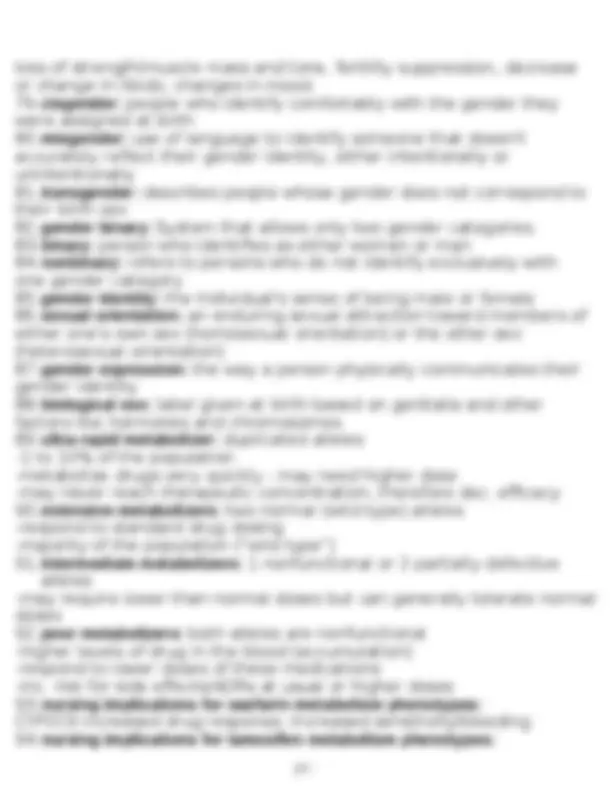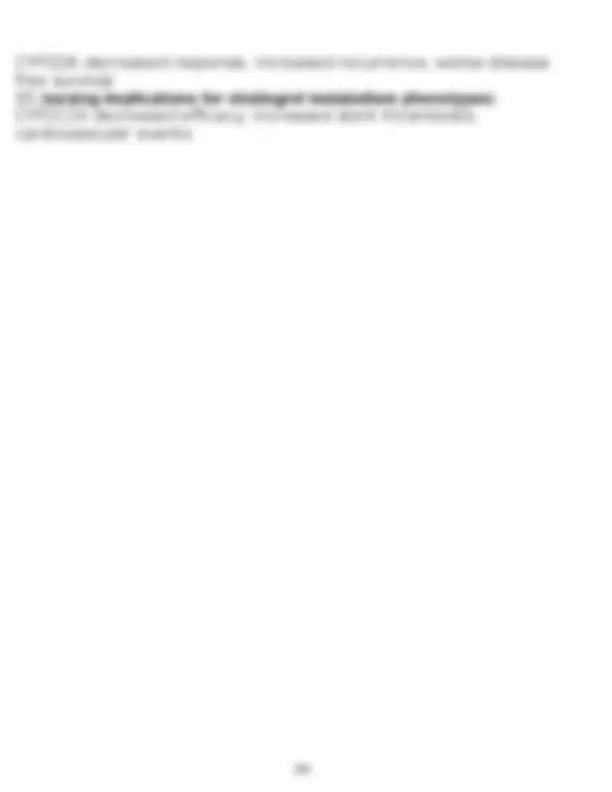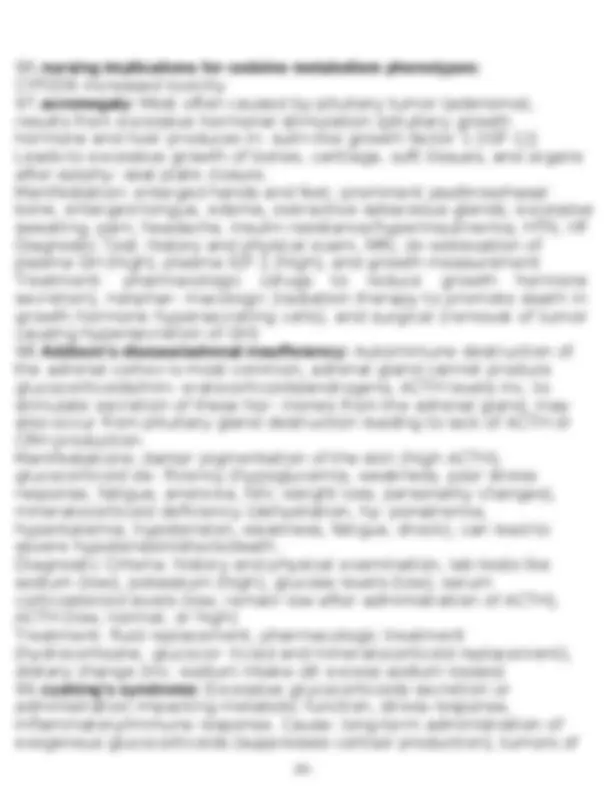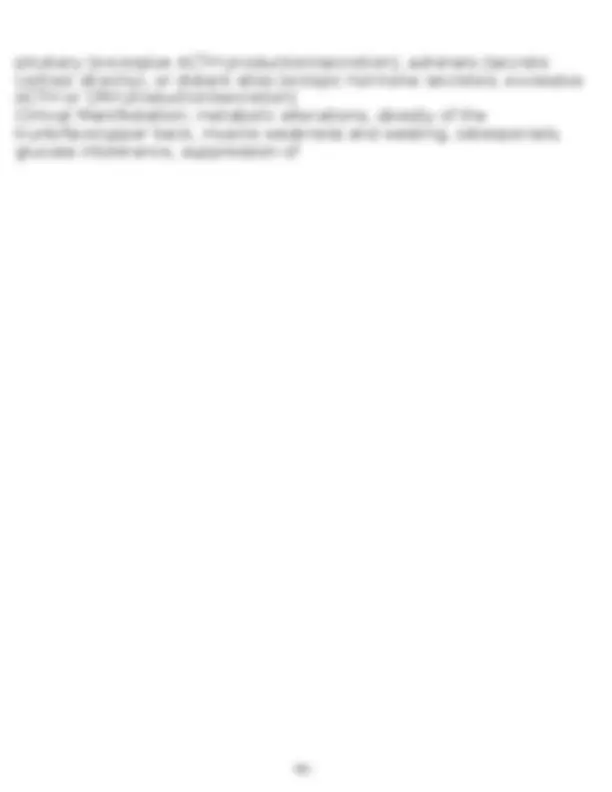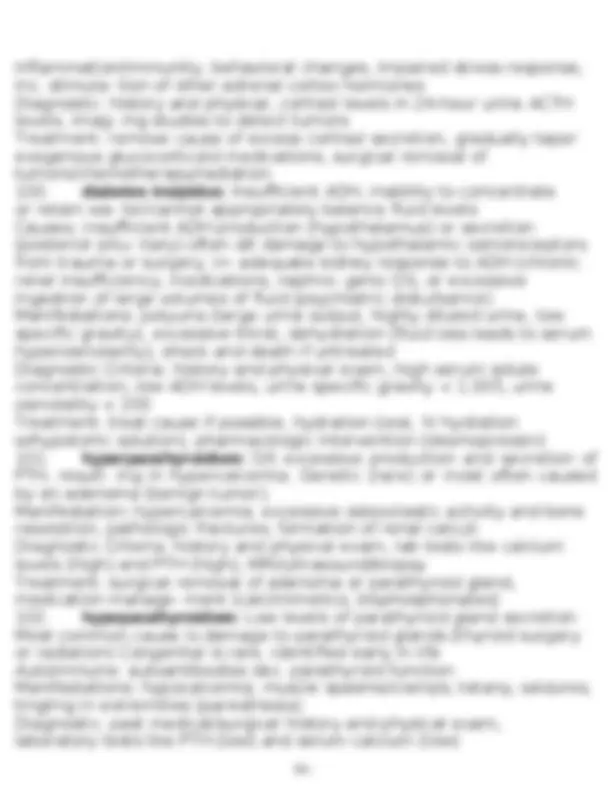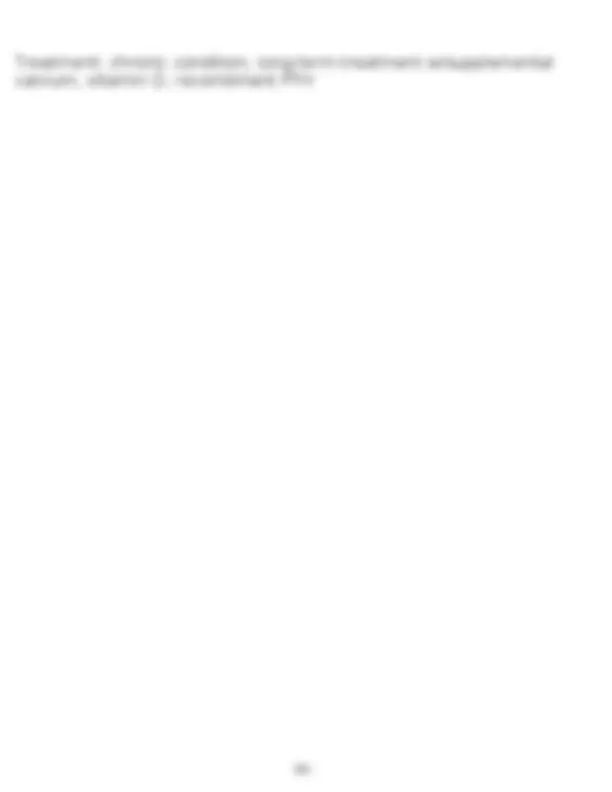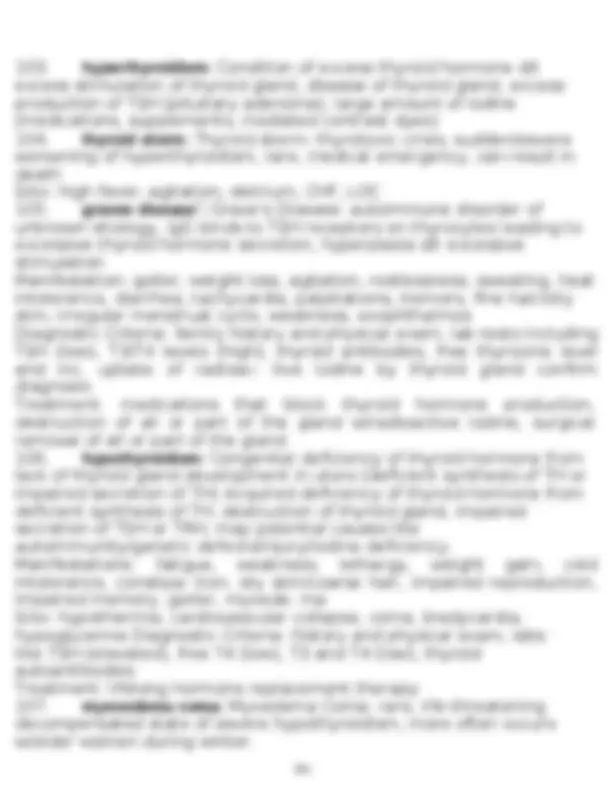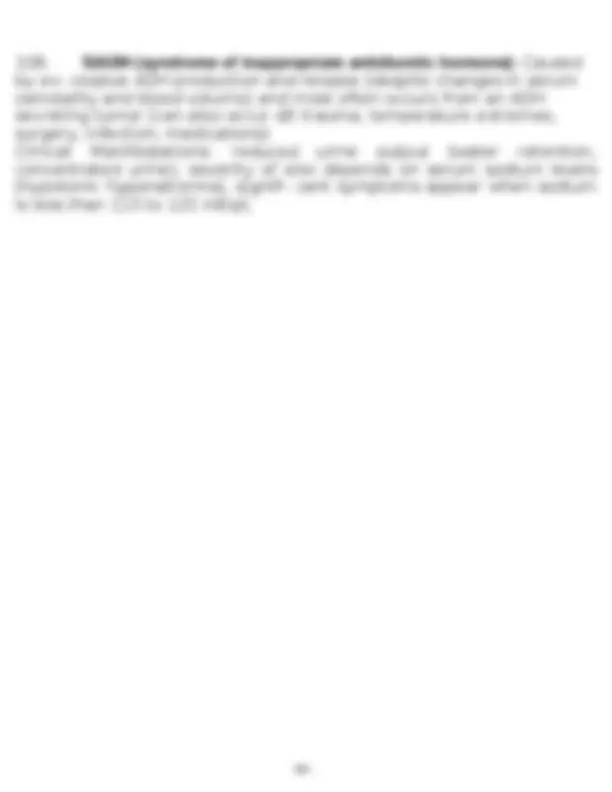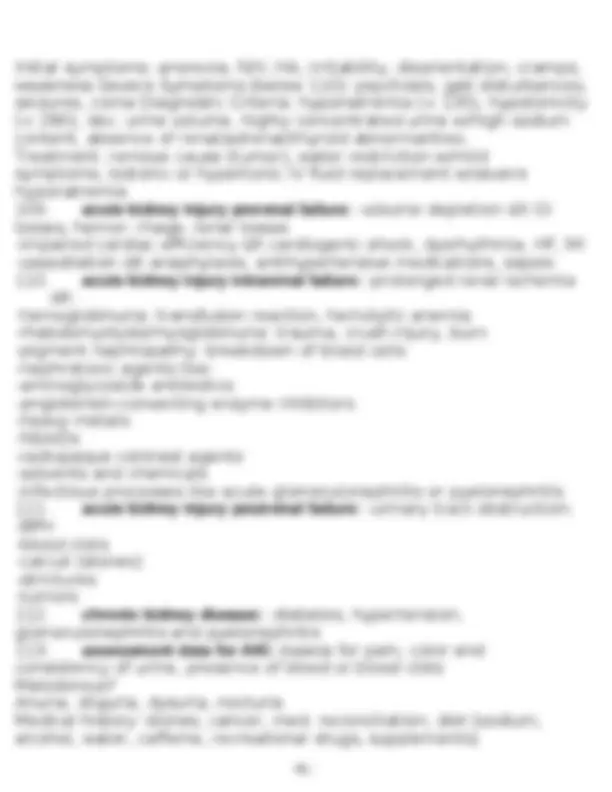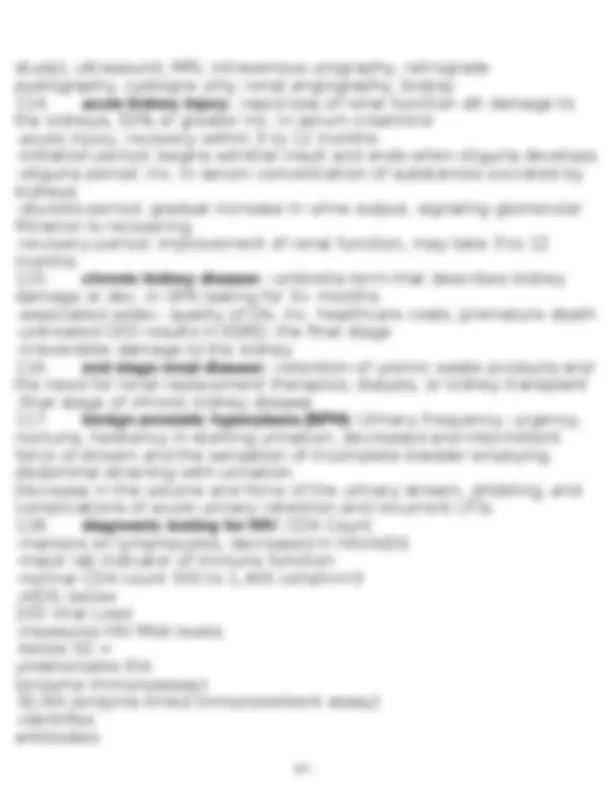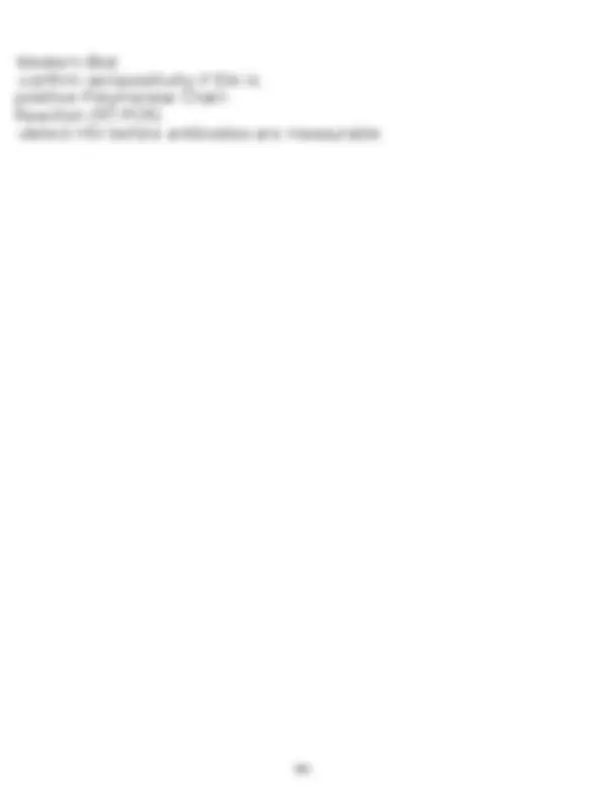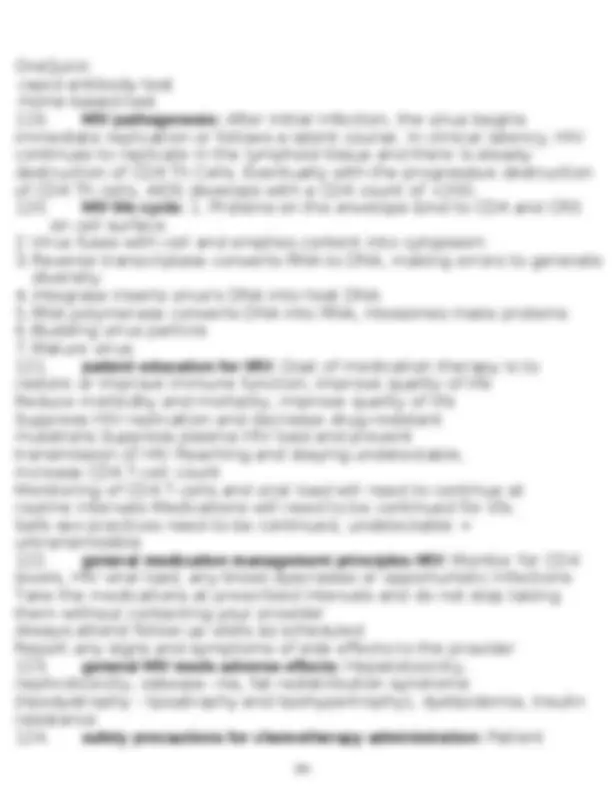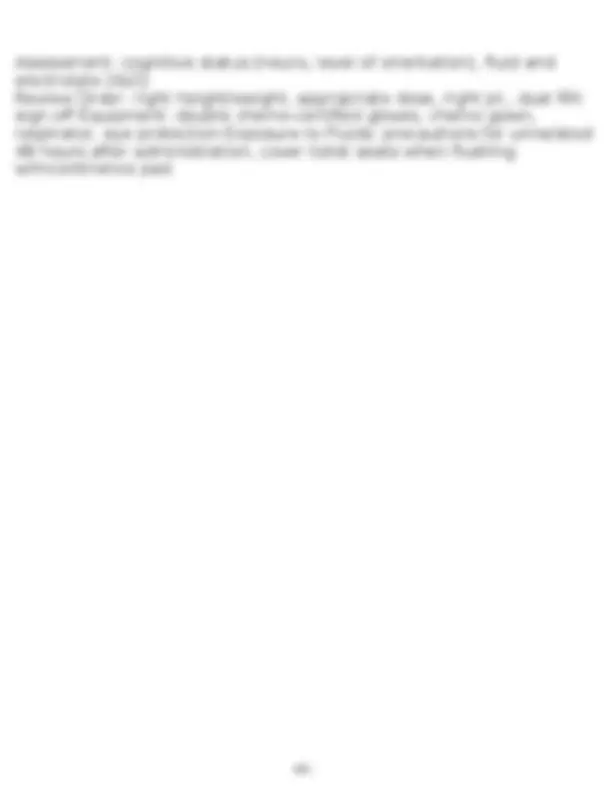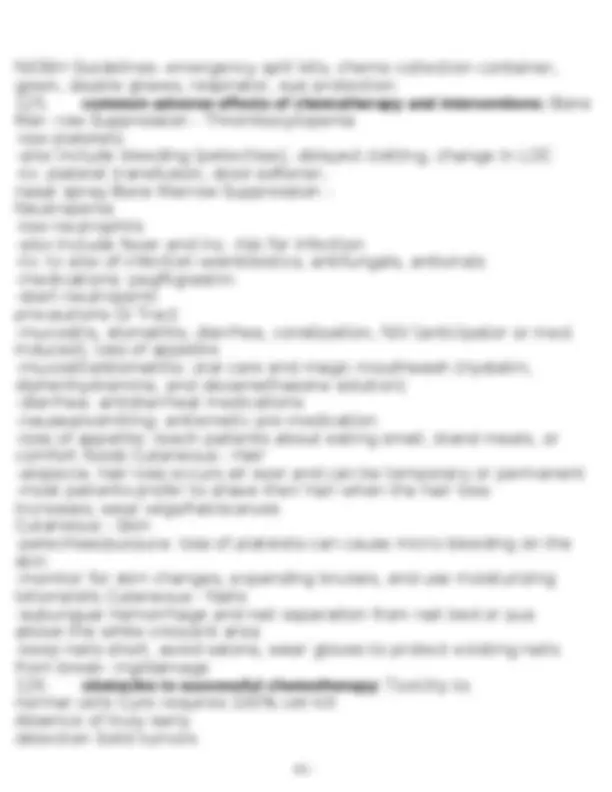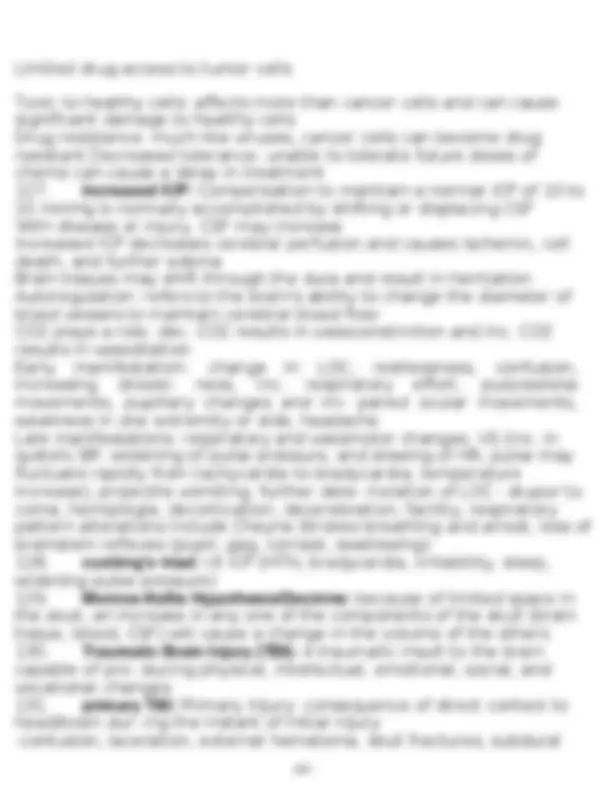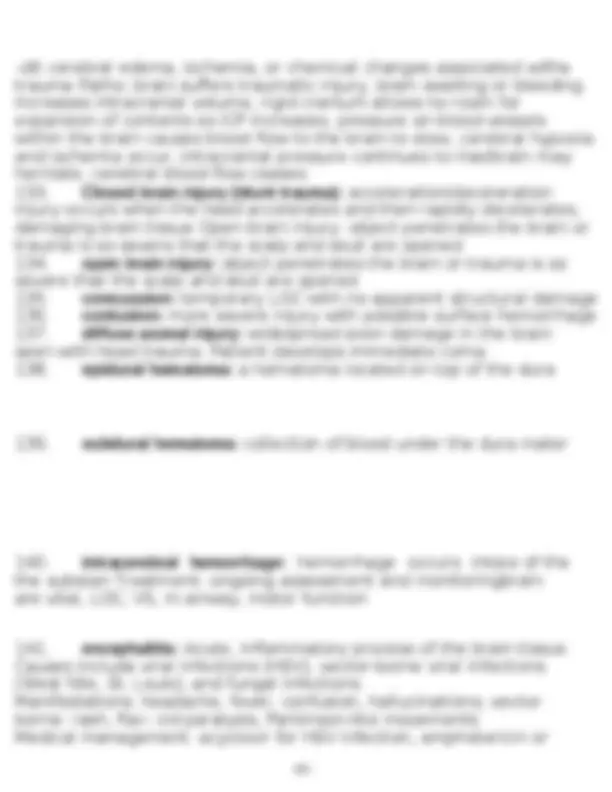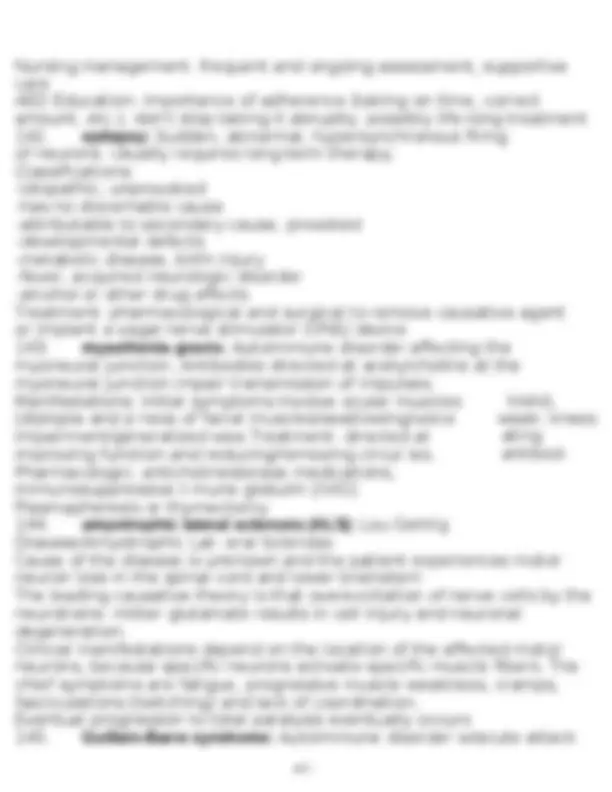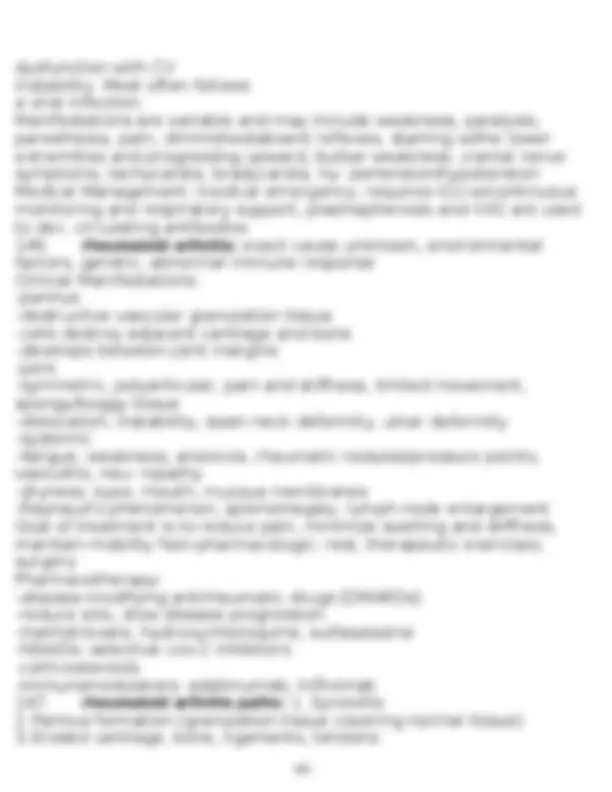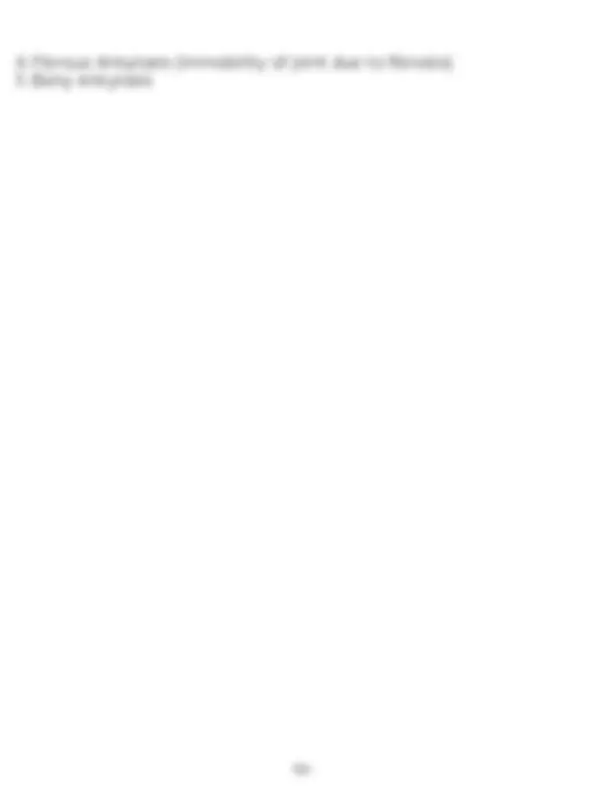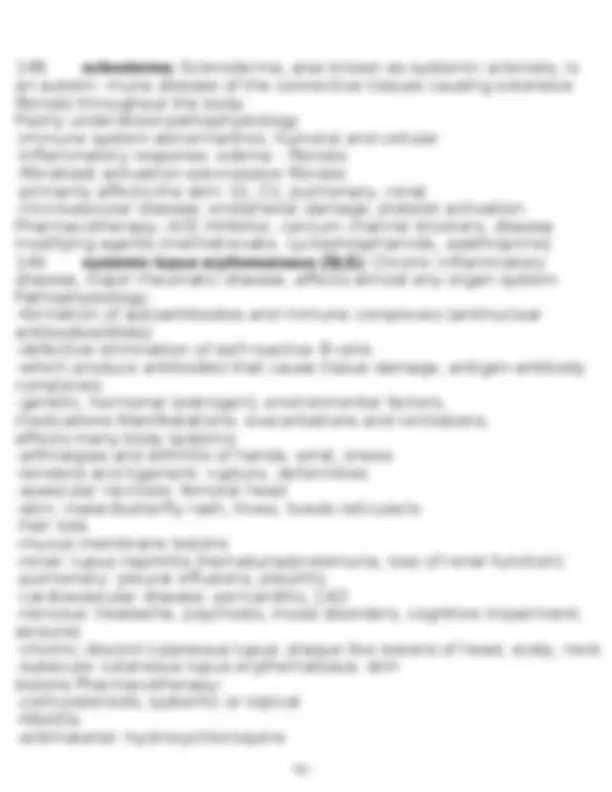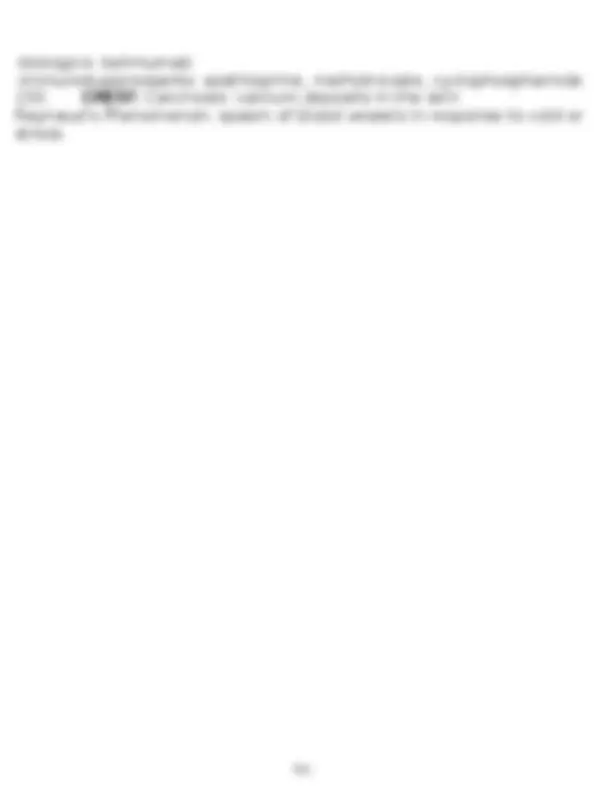Download Medication Administration, Heart Conduction, & Sickle Cell Disease: NUR352 Final Review and more Study Guides, Projects, Research Nursing in PDF only on Docsity!
NUR352 Final Blueprint Study Guide Review
- rights of medication administration: Right drug Right dose Right patient Right route Right time Right reason Right documentation Right patient education Right evaluation Right to refuse Right assessment
- drug administration principles: Follow "rights" consistently Learn essential information about medications to be passed Interpret the provider's order accurately Read medication labels carefully Minimize abbreviation use to prevent errors Calculate doses accurately (may require double verification) Measure doses accurately (may require double verification) Use correct procedures and techniques for all administration routes. Learn about the patient's diagnoses and condition in relation to medication admin- istration. Verify identity of patients before administering medications. Omit or delay doses as indicated by the patient's condition and document accord- ingly. Be especially careful when administering medication to children due to high risk of medication error.
- IM administration: deltoid, ventrogluteal, vastus lateralis muscles 20-22 gauge in adults
- IV administration: back of hands, forearm
- PO administration: my mouth, oral (also through NG or G tube IF THE
ORDER SAYS BY TUBE)
-tablets, capsules, sublingual -controlled release: -enteric coated to prevent stomach upset -maintains more consistent serum drug levels -allows less frequent administration, more convenient for patients -tablets, capsules: -contain high amount of the drug
- Normal Heart Conduction Pathway: Sinoatrial (SA) Node: the normal origina- tion of electrical impulse, faster than AV node
Atria Atrioventricular (AV) Node: introduces a delay between atrial and ventricular excita- tion, allowing for efficient ventricular filling Bundle of His (atrioventricular bundle): conducts impulses from the right atrium to the ventricles Left/Right Bundle Branches: conducts impulses to the ventricles Purkinje Fibers: transmits/distributes the electrical impulses across the cardiac muscle
- endocarditis: inflammation of the inner lining of the heart
- rheumatic endocarditis: -acute rheumatic fever d/t group a beta- hemolytic streptococcal pharyngitis -treat streptococcal pharyngitis w/antibiotics to prevent rheumatic fever
- infective endocarditis: Infective Endocarditis -infection and inflammation of inner heart lining and valves -vegetations form and can embolize to other parts of the body -risk factors: -prosthetic heart valves -cardiac devices -structural defects -IV drug use -body piercing, tattooing, branding -invasive procedures (dental procedures, surgery, IV line placement) -manifestations: fever, murmur, petechiae, splinter hemorrhage in nailbeds, osler's nodes, roth spots, HF, anorexia, fatigue, emboli -diagnostic: blood culture, EKG, CT, CBC, ESR -Tx: IV antibiotics or antifungals, surgery
- myocarditis: -inflammation (acute or chronic) of myocardium -often d/t systemic infection, allergic response, immunosuppression, response to toxins -typically vital -manifestations: fever, dyspnea, fatigue, syncope, chest pain, palpitations, severe - cardiomyopathy and HF, sudden cardiac death -diagnostic: MRI, similar labs to endocarditis -Tx: antibiotics (if appropriate), bedrest, decrease cardiac workload
- pericarditis: -inflammation (acute or chronic) of the pericardium and pericardial sac -causes: infection (viral), autoimmune, medication reactions, cancer, radiation, chest trauma -complications: pericardial effusion, cardiac tamponade, thickening and
ity of pericardium (constrictive pericarditis) -manifestations: -friction rub at apex of the heart (scratchy, high-pitched, grating, creaking sound) -fever -retrosternal chest pain: radiates to left side of neck, shoulder, or back -grating pain, worsened w/breathing (inspiration), coughing, swallowing -worse when supine, leaning forward relieves pain -dysphasia -EKG changes: ST elevation -diagnostics: echo, pericardiocentesis, CT, MRI, EKG, CBC, ESR, c-reactive protein -Tx: analgesics, anti-inflammatories, pericardiocentesis, pericardial window
- angina: Pathophysiology: dec. oxygen supply w/inc. myocardial demand, ather- osclerosis (obstruction) Risk factors: physical exertion, col exposure, dec. blood supply, emotions/stress
- stable angina: occurs on exertion, predictable, relieved by rest or nitroglycerin
- unstable angina: (crescendo or preinfarction): frequency and severity of symp- toms increases. -may not be relieved by rest or nitroglycerin
- intractable/refractory angina: severe and incapacitating
- variant angina: (Prinzmetal): chest pain at rest, vasospasm of coronary arteries -reversible ST-segment elevation
- silent ischemia: no pain, evidence of ischemia (EKG changes)
- nursing considerations for unstable angina: Unstable Angina -atherosclerotic plaque -> plaque rupture -not completely occluded -need intervention to prevent MI
- nursing considerations with MI: -ischemia and necrosis -complete arterial occlusion (plaque, thrombus) -coronary artery vasospasm -decreased oxygen supply w/increased oxygen demand
- nursing considerations for acute coronary syndrome: -clinical manifesta- tions similar to unstable angina -non-ST-segment elevated myocardial infarction (NSTEMI)
-ST-segment elevated myocardial infarction (STEMI) -significant damage to myocardium Diagnostics: EKG, biomarkers, echo (ventricular function, wall motion, EF) Complications: ischemia, heart failure Goal of treatment: minimize damage
- beta blockers: decrease heart rate and dilate arteries by blocking beta recep- tors
- sickle cell disease: Sickle Cell Disease is caused by an abnormal type of hemoglobin (hemoglobin S) which distorts the shape of erythrocytes when the body's supply of oxygen is low. The sickle cells are fragile, clog up small blood vessels, break into pieces that disrupt blood flow and deliver less oxygen to the tissues. Sickle Cell Crisis is a very painful and common event in adults, where cells become trapped and tissue becomes ischemic, inflamed, and necrotic due to inadequate blood flow -manifestation: chronic skin ulcers, pain, edema of hands and feet, fever
- acute chest syndrome: Acute Chest Syndrome is manifested by fever, respira- tory distress (tachypnea, cough, wheezing), and new infiltrates seen on the chest x-ray -main cause of death in young adults w/sickle cell disease -symptoms are similar to infection which are often the cause
- Disseminated Intravascular Coagulation (DIC): -DIC is not a disease but a sign of an underlying disorder -severity is variable, can be life threatening -cause: sepsis, trauma, shock, cancer, abruptio placentae, toxins, allergic reactions -altered hemostasis mechanism causes massive clotting in microcirculation. As clotting factors are consumed, bleeding occurs. Symptoms are d/t tissue ischemia and bleeding Treatment: -treat underlying cause -correct tissue ischemia -replace fluid, electrolytes, clotting factors -maintain BP -use heparin Complication s: -kidney injury (micro-clots in smaller vessels = dec. perfusion = ischemia) -hepatic failure (micro-clots in smaller vessels = dec. perfusion = ischemia) -gangrene -pulmonary embolism or hemorrhage -acute respiratory distress syndrome -stroke Pharmacolo
right shoulder ntestina l enlarge d -other drugs: dabigatran, rivaroxaban, apixaban, edoxaban, aspirin Lab Values -D-Dimer: protein fragment produced when a blood clot is dissolved. Normally undetectable or very low level. SIGNIFICANTLY ELEVATED -prothrombin: protein made by the liver, measures how long for time to form. ELE- VATED -partial thromboplastin time (PTT): measures time for a blood clot to form. Checks function of factors VIII, IX, X1, XII. ELEVATED
- therapeutic INR for warfarin: 2-
- heparin administration: Heparin: always dosed in units -IV: active disease and treatment (DVT, surgery, PE, DIC, stroke) -subcutaneous: prevention only
- enoxaparin administration: Enoxaparin: subcutaneous only -prevent (DVT) and treatment of clots (PE)
- cholecystitis: Pathophysiology: inflammation of gallbladder -acalculous: no obstruction by gallstones -d/t surgery, trauma, burns, infection, cystic duct obstruction Clinical Manifestation: RUQ pain, tenderness, rigidity, radiating pain to or midsternum, N/V, fatty foods precipitate symptoms Complication: rupture of gallbladder Goal of Treatment: correct underlying cause of inflammation or obstruction
- esophageal varices: Pathophysiology: damaged liver, obstruction of portal ve- nal circulation, inc. pressure within portal circulation, venous blood from i tract seeks alternative paths, inc. pressure in lower esophagus, results in tortuous venous Manifestation: enlarged, tortuous veins in lower part of the esophagus. L amounts of blood into upper GI tract, causing coffee-ground emesis/mel Complications: rupture is MEDICAL EMERGENCY Goal of treatment: prevent bleeding, dec. pressure
- hepatitis: Pathophysiology: diffuse liver inflammation, destruction of liver cells due to infection Manifestation (prodromal stage): fatigue, anorexia, N/V, general malaise, depres- sion, HA, weakness, arthralgia, myalgia, photophobia, elevated temperature, RUQ tenderness Manifestation (clinical stage): itching, abdominal pain/tenderness,
indigestion, ap- petite loss, jaundice Complication: liver cirrhosis and failure Goal of treatment: prevent cirrhosis and future complications
after surgery), hernias, volvulus (twitching of intestine), intussusception (telescoping of bowel) Functional: paralytic ileus - intestinal blockage, paralysis of intestinal muscles
Complications/manifestations: constipation, abdominal distention, nausea, vomit- ing, perforation Goal of treatment: resolve underlying cause of obstruction
- Non-alcoholic fatty liver disease (NAFLD): Pathophysiology: fat accumulation commonly associated with obesity (type II DM, dyslipidemia, metabolic syndrome, insulin resistance) Manifestation: (from google) fatigue and RUQ pain/dullness Complication: eventually leads to Cirrhosis Goal of Treatment: reduce liver-related morbidity/mortality
- peritonitis: Pathophysiology: inflammation of peritoneum due to bacterial infec- tion, GI tract disease, injury or trauma, or inflammation from other organs Manifestation: tissue edema, fluid in peritoneal cavity, paralytic ileus, diffuse pain, abdominal distention, abdominal tenderness, elevated temperature, sepsis Complication: inflammation, paralytic ileus Goal of treatment: treat underlying cause, relieve inflammation
- portal hypertension: Pathophysiology: resistance to portal blood flow, mostly occurs within the liver. Due to structural changes in liver microcirculation or inc. vasoconstrictor production/reduced release of endothelial vasodilators Manifestations: splenomegaly, varices, thrombocytopenia, ascites Complication: thrombocytopenia, hemorrhage Goal of Treatment: reduce pressure, fluid build up, prevent complications
- pancreatitis: Pathophysiology: inflammation of the pancreas d/t pancreas harm- ing itself Due to alcoholism (poor prognosis), trauma, peptic ulcer, biliary tract disorder (good prognosis) Causes: gallstones, alcohol consumption, overactive thyroid, elevated cholesterol, pancreatic cysts or tumors, peptic ulcers, trauma, medications, hereditary disposi- tion Clinical Manifestation: abdominal pain (sudden onset, mid-epigastric or LUQ, radi- ates to back, aggravated by fatty meal/alcohol/lying flat), abdominal tenderness, N/V, weight loss Complication: pseudocysts (according to google) Goal of Treatment: correct underlying cause of inflammation and prevent further damage
- whole blood: cells and plasma, hematocrit about 40%
increase RBC mass; symptomatic anemia; platelets not functional; WBCs may cause reaction and aren't functional
- platelets- random: platelets (5.5x10^10), plasma, some RBCs, WBCs bleeding due to severe decrease in platelets, prevent bleeding, repeated treatment lead to decreased survival due to alloimmunization
- platelets- single donor: platelets (3x10^11) 1 unit equal to 6-8 units of random platelets used for repeated treatments
- plasma: plasma; all coagulation factors; complement bleeding in patients with coagulation factor deficiencies; plasmapharesis
- lab data required for blood transfusions: Lab values have to be from blood collected within the last 3-4 days, always make sure there is an up-to-date type and screen (last 3 to 4 days) CBC: H&H
- pre-procedure for blood administration: 1. confirm that the transfusion has been prescribed 2.check the patient's blood has been typed and cross-matches 3.verify that patient has signed written consent 4.explain procedure to patient; education about s/sx of transfusion reaction (itching, hives, swelling, SOB, fever, chills)
- take patient's temp, RR, BP, and fluid volume status to serve as baseline for comparison during transfusion
- notes if signs of increase fluid overload present, contact provider to discuss potential need for a prescription for diuretic 7.use hand hygiene and wear gloves 8.use appropriate IV cannula for insertion into peripheral vein; use blood filter
- procedure of blood administration: 1. obtain PRBCs from blood bank after IV is started 2.double-check labels with another nurse to ensure type and Rh; check number and type on donor blood label and on patient's medical record; confirm patient ID 3.check blood for gas bubbles of color/cloudiness
- make sure that PRBC transfusion is initiated within 30 mins after removal from blood bank
5.for first 15 mins, run transfusion slowly (5 mL/min) then observe for adverse effects 6.monitor closely for 15-30 minutes to detect signs of reaction

